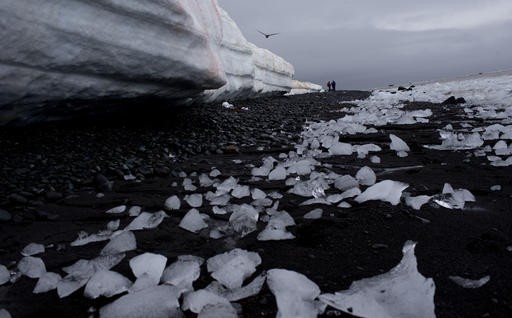Popular Reads
Top Results
Can't find what you're looking for?
View all search resultsPopular Reads
Top Results
Can't find what you're looking for?
View all search resultsTrillion-tonne iceberg breaks off Antarctica
Change text size
Gift Premium Articles
to Anyone
A
n iceberg the size of Delaware, one of the largest on record, was set adrift after snapping off a West Antarctic ice shelf that is now at increased risk of collapse, scientists said Wednesday.
A crack in the Larsen C ice shelf, a drifting extension of the land-based ice sheet, finally broke through after inching its way across the ice formation for years.
The calving of ice shelves occurs naturally, though global warming is believed to have accelerated the process. Warmer ocean water erodes the underbelly of the ice shelves, while rising air temperatures weaken them from above.
The calving created an iceberg about 5,800 square kilometres (2,200 square miles) big, with a volume twice that of Lake Erie, one of the North American Great Lakes. It is about 350 metres (1,100 feet) thick.
"The iceberg weighs more than a trillion tonnes, but it was already floating before it calved away so has no immediate impact on sea level," said a team of researchers from the MIDAS Antarctic research project.
It will likely be named A68.
"The calving of this iceberg leaves the Larsen C Ice Shelf reduced in area by more than twelve percent, and the landscape of the Antarctic Peninsula changed forever," the team added.
Separation occurred somewhere between Monday and Wednesday, and was recorded by a NASA satellite.
Icebergs calving from Antarctica are a regular occurrence. But given its size, this behemoth will be closely watched for any potential risk to shipping traffic.










